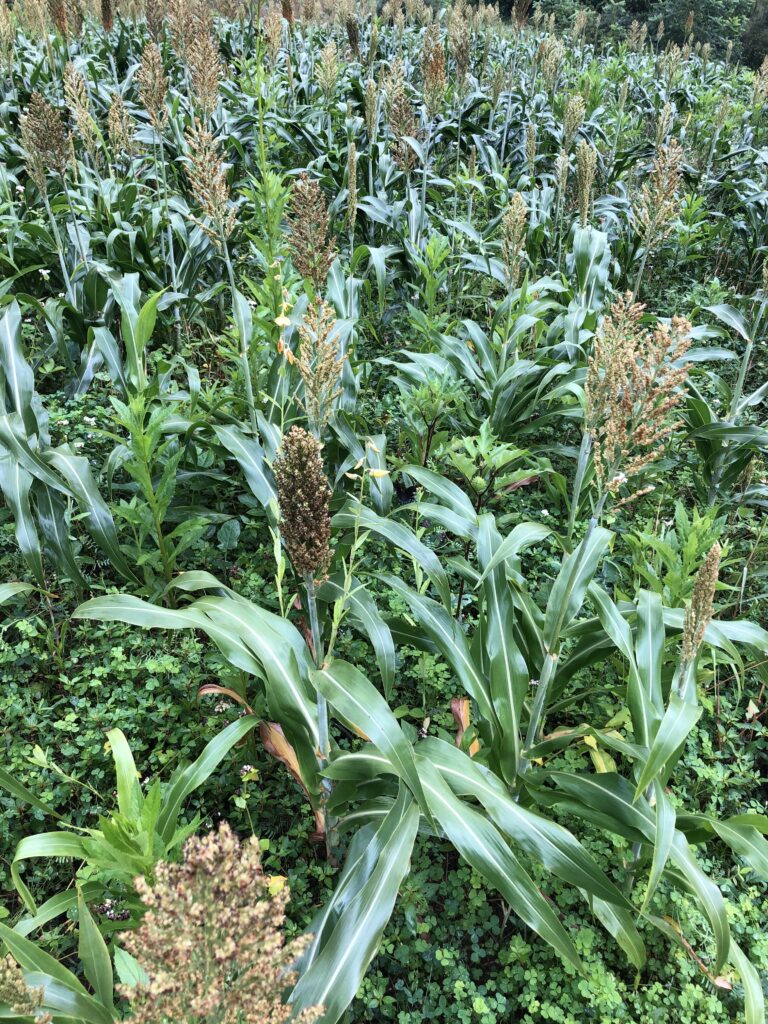7th soil health principle? My vote is – Nutrient Cycling!
We often hear the term “build soil” – I am guilty of using it far too often! However, when it comes to a garden, AG, or food-plotting situation it is not as much about “building soil” with a singular mix or planting, as it is about cycling nutrients between plantings. Building soil (increasing our OM, microbe populations, etc.) is simply a bi-product of sound nutrient cycling processes and following the 6 soil health principles.
When we focus on nutrient cycling, we always need to think one step ahead of the current planting. Here at Vitalize Seed we often refer to C: N ratios and the importance of this balance and cycle. We have worked hard to take the guesswork out of this for our customers, hence a Spring planting that feeds the Fall and the Fall planting that feeds the Spring.
As we go from one planting to the next, we need to think in terms of carbon and nitrogen ratios. If we have a very high carbon fall planting, and we follow it with another high carbon Spring planting – we are setting ourselves up for nutrient tie-up – this often leads people to bring out the tiller again! This in and of itself can reduce our ability to “build soil”.
To dive into this more, we must remember that the average microbe is made up of 8:1 Carbon to Nitrogen. These microbes need a diet source of at least 24:1 C: N. Hairy-Vetch, for example, is only 11:1 C: N – this means if you have a mono-culture of Hairy-Vetch, you are likely going to have some hungry microbes on your hands, in the near future. These microbes can and will find a carbon source, often mining our own organic matter…not building soil!
A counter-example of this would be cereal rye as the monoculture cover crop, before corn or even sunflowers. Unless you plan to spend a lot of time and money on N fertilizer, you are going to have N tie up. You have given the microbes a significant carbon source, but not enough nitrogen to break down the biomass, this is assuming all no-till. If we add tillage, we can break down the bio-mass faster, but there are negatives that accompany that decision – another blog for another day.
What happens when we do cycle nutrients efficiently?
With our mixes or any balanced system, you can use biology to cycle the above and below-ground biomass to feed the subsequent plantings. This helps to reduce or even eliminate the need for synthetic fertilizers.
How does this work?
We are mining nutrients, making them plant available to the next crop, and assimilating some nutrients into soil organic matter structures through the work of the microbes (bacteria and fungi) breaking down the previous plantings. Due to the C: N focus of our mixes, we can be confident that as the beans break down from the Spring planting, a rye grain will be there to assimilate the nitrate, for example.
Likewise, due to the diversity, a turnip or radish will be doing work by sending a tap root deep into the soil, helping grab any additional nitrate before it leaches out of our system. Due to the promotion of no-till and diverse plantings, we are also promoting fungal system establishment over time, allowing our system to become even more efficient at cycling higher lignin-filled crops. These fungal networks continue to promote the creation of biotic glues that further drive better soil structure, and aggregation, which help to promote healthy microbial populations in our soil profile, driving better soil creation!
All this nutrient gathering and cycling leads to healthier plants, soils, crops, deer, etc., and reduces our needs for inputs.
Thank you for considering Vitalize Seed as your seed source.
Albert
